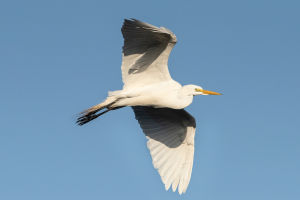Hey, Lykkers! Have you ever marveled at the delicate beauty of damselflies flitting gracefully over ponds and streams?
These enchanting insects are not only stunning to observe but also play an essential role in their ecosystems.
What Are Damselflies?
Damselflies belong to the order Odonata, which also includes dragonflies. They are often confused with their larger counterparts, but damselflies are generally smaller and have slender bodies. They typically measure between 2 to 5 centimeters in length. One of their most distinctive features is their delicate, transparent wings that are often tinted in vibrant colors, ranging from bright blue and green to more muted hues.
Unlike dragonflies, damselflies tend to rest with their wings closed above their bodies, creating a striking silhouette. They can be found in various habitats, including freshwater lakes, ponds, and marshes, where they thrive in lush vegetation.
The Life Cycle of Damselflies
Damselflies undergo a complex life cycle, consisting of four stages: egg, nymph, adult, and reproductive. The female damselfly lays her eggs in or near water, and once they hatch, the nymphs emerge. These nymphs live underwater and can remain in this stage for several months to several years, depending on the species and environmental conditions.
As nymphs, damselflies are skilled predators, feeding on small aquatic insects and even fish fry. When it’s time to transition into adulthood, they crawl out of the water and undergo a metamorphosis. This process involves shedding their exoskeleton and expanding their wings, allowing them to take their first flight.
Importance in the Ecosystem
Damselflies play a crucial role in their ecosystems as both predators and prey. As nymphs, they help control the populations of smaller insects in aquatic environments. Adult damselflies, in turn, become food for various birds, amphibians, and larger insects, contributing to the food chain.
Additionally, damselflies serve as indicators of ecosystem health. Their presence often signifies clean, unpolluted water, while a decline in their population can indicate environmental issues, such as pollution or habitat loss. Observing damselfly populations can provide valuable insights into the overall health of aquatic ecosystems.
Some facts about Damselfly
Video by Educational Facts
How to Spot Damselflies
If you're keen on observing these lovely insects, here are some tips for spotting them in the wild:
Visit Freshwater Habitats: Look for damselflies near ponds, lakes, or streams, especially in warm weather. They are most active during sunny days.
Identify Their Colors: Pay attention to their vibrant colors. Common species include the Azure Damselfly and the Emerald Damselfly, both known for their striking blue and green hues.
Observe Their Behavior:Watch for their unique flight patterns. Damselflies often hover or dart around before landing, making them a joy to observe.
Damselflies are not just beautiful; they are vital components of our ecosystems. By understanding and appreciating these remarkable insects, we can contribute to their conservation and help protect the delicate balance of nature. So, Lykkers, next time you’re near a body of water, take a moment to look for these exquisite creatures—you might just find a new favorite in the world of insects!


